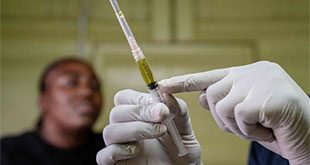
By Angella Abushedde
Pain can be alleviated to enable normal life cycles like psychosocial development, education, job retention
On many days Faith Talemwa, 24, enjoys doing the things young women her age like to do. But on some days, Talemwa suffers such debilitating pain she can barely get out of bed. She was born with sickle cell disease, a genetic disorder that impairs the Red Blood Cells (RBCs), the cells that give blood its red colour and are central to transporting oxygen around the body.
Normal RBCs are semi-toroid and circular but, in sickle cell disease patients, or sicklers, they assume an abnormal sickle shape making it difficult for blood to flow through the vessels. This causes episodes of pain and can also lead to organ damage.
Recurrent episodes of pain are the most disabling feature of sickle cell anemia. They interfere with normal life cycles like education, job retention, and psychosocial development. In Talemwa’s case, the disease has kept her out of school many times and she was asked to take a dead year when she fell ill for about three months during the second semester of her first year at university.
Signs and symptoms of sickle cell include acute chest syndromes, swelling and weakness of arms and legs, infections, painful crises, seizures headaches, spleen problems, pain in the lower abdomen and loss of consciousness among others.
Charlene Komujuni, a doctor at Mulago National Referral Hospital, explains that humans who inherit a sickle cell gene from each parent have hemoglobin SS disease, also called sickle cell anemia.
But some humans inherit a sickle cell gene from one parent and a different kind of abnormal gene from the other parent and end up with a different form of sickle cell disease (hemoglobin SC disease or hemoglobin S beta thalassemia.
Someone who inherits only one sickle cell gene and a normal gene from the other parent will have a sickle cell trait, but not the disease. People with sickle cell trait do not have sickle cell disease and usually do not exhibit signs of the disease but they can pass the gene for the disease to their children.
When both parents have a sickle cell trait, there is a 25% chance that a child will have sickle cell disease. But when one parent is carrying the trait and the other actually has the disease, the odds increase to 50% that the child will inherit the disease.
Because most children with sickle cell disease have some degree of anemia they are at an increased risk of infection and other health complications. Komujuni advises early diagnosis and treatment to prevent problems.
Sickle cell disease is usually diagnosed at birth with a blood test during routine screening tests. “If a child tests positive on the screening test, a second blood test (hemoglobin electrophoresis) should be performed to confirm the diagnosis,” Komujuni says.
It is estimated that 33,000 babies are born each year with the disease and 80% of these die before celebrating their fifth birthday. Unfortunately, the only data available was compiled by government in the early 1970s. It shows that the trait frequency of sickle cells in Uganda is 20% of the population.
That is six million people are at risk of having a child with sickle cell disease. The Bamba people in the south west of Uganda carry 45% of the gene which is the highest trait frequency in the world.
Speaking at the first annual sickle cell conference held on July 11 to break the silence and stigma suffered by sicklers in Uganda, Lukia Mulumba the President Uganda American Sickle Cell Rescue Fund (UASCRF) said there is inadequate data concerning sickle cell disease in Uganda due to lack of funds for research.
“Sickle cell has been ignored by government,” she said.
The sickle cell clinic in Mulago Hospital has over 9000 patients registered with it but only 3000 are on treatment. On average the daily clinic, the only one in the country, sees 200 patients a week. That is too low for a disease that attacks patients spread throughout the country at any time.
According to Edward Katongole Mbidde, the director Uganda Virus Research Institute, the US National Heart, Lung, and Blood Institute (NHLBI) in 1995, announced a drug treatment for sickle cell anemia but the drug has not been used in Uganda.
Findings from a multicenter clinical trial showed that daily administration of the drug hydroxyurea reduced by about 50% the frequency of painful episodes and hospital visits for people with sickle cell. The treatment also reduced the frequency of acute chest syndrome and the number of blood transfusions for patients in the study.
Bone marrow transplant is the only known cure for sickle cell disease but transplants are complex and risky procedures and currently are an option only for a carefully selected subset of patients with severe complications.
Even without a cure, children with sickle cell disease can live a normal life. Medicines are available to help manage the pain, and immunisations and daily doses of penicillin can help prevent infection. Penicillin helps by preventing bacteria from causing serious infections in the blood, including meningitis, and pneumonia.
Most children will require two daily doses of penicillin, as prescribed by their doctors, until they’re at least five years old.
They also should be fully immunised with the regular childhood vaccinations, as well as the pneumococcal vaccine and influenza and meningococcal vaccines. Folic acid supplements can help them continue to produce new RBCs.
Dr Komujuni advises parents and schools to take children with sickle cells take lots of fluids, get plenty of rest, and avoid extreme temperatures.
 The Independent Uganda: You get the Truth we Pay the Price
The Independent Uganda: You get the Truth we Pay the Price





